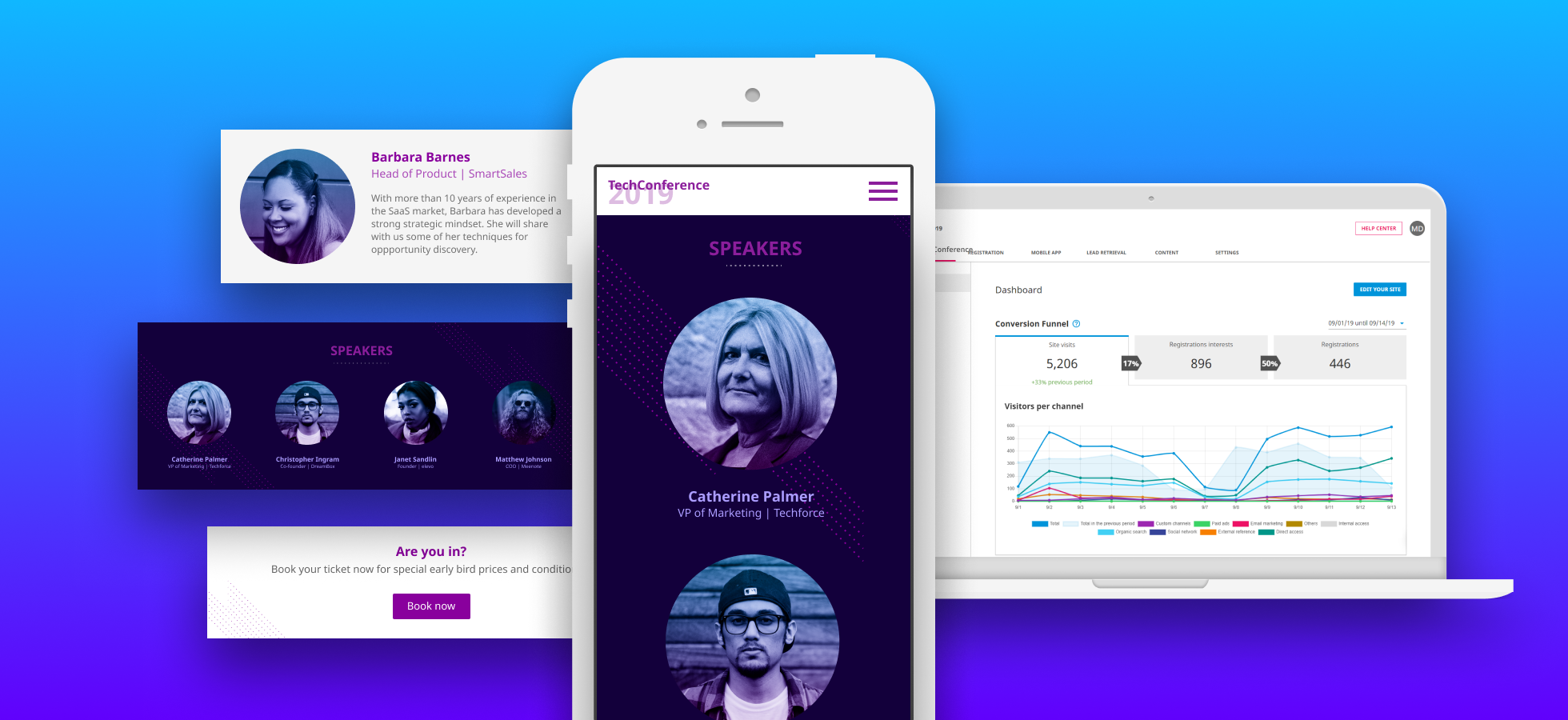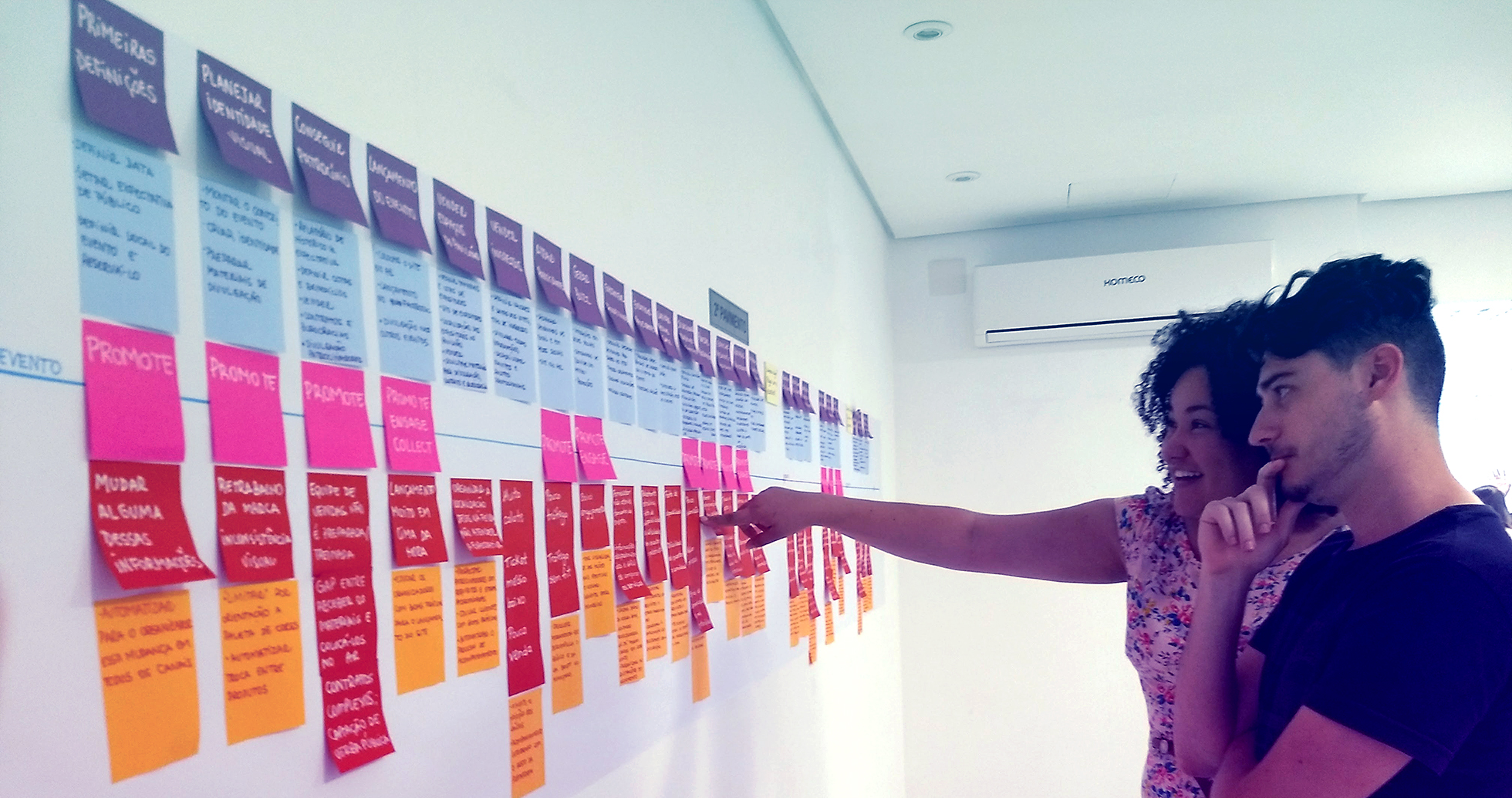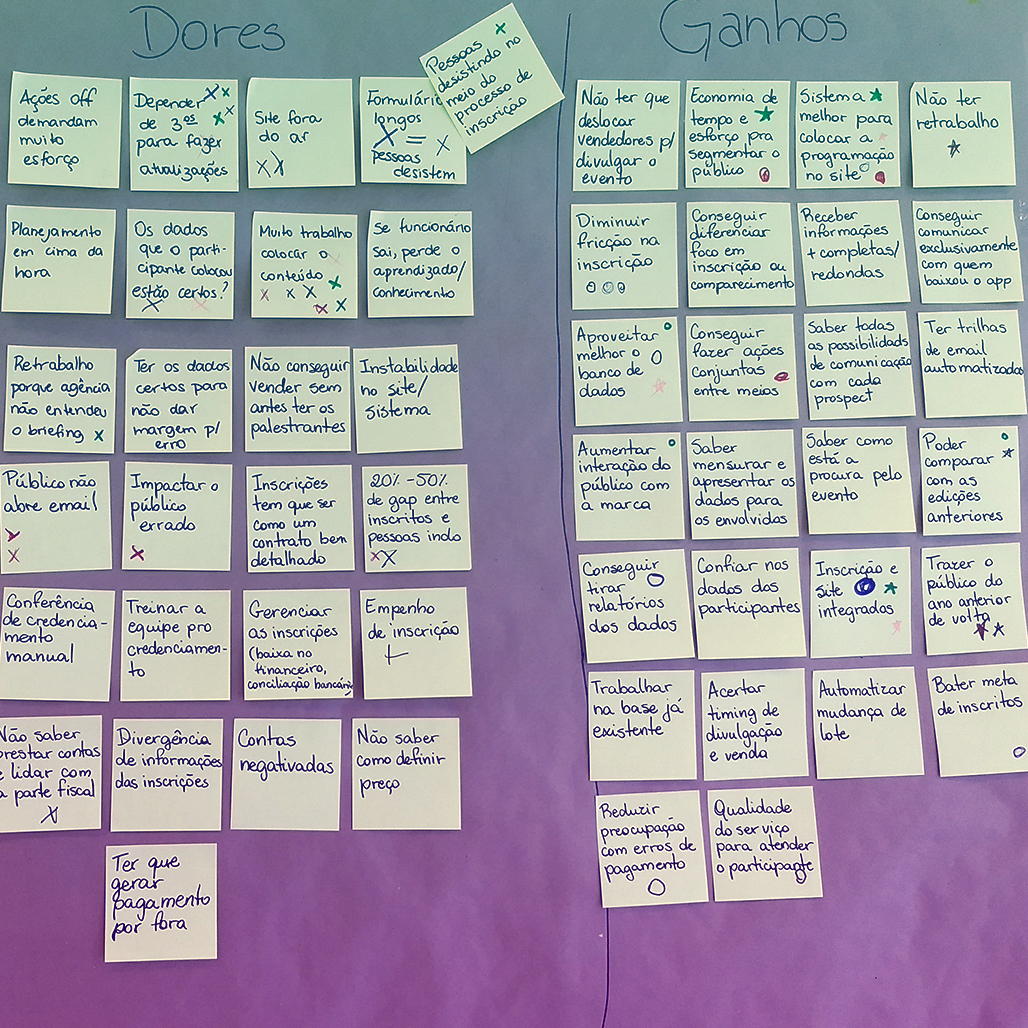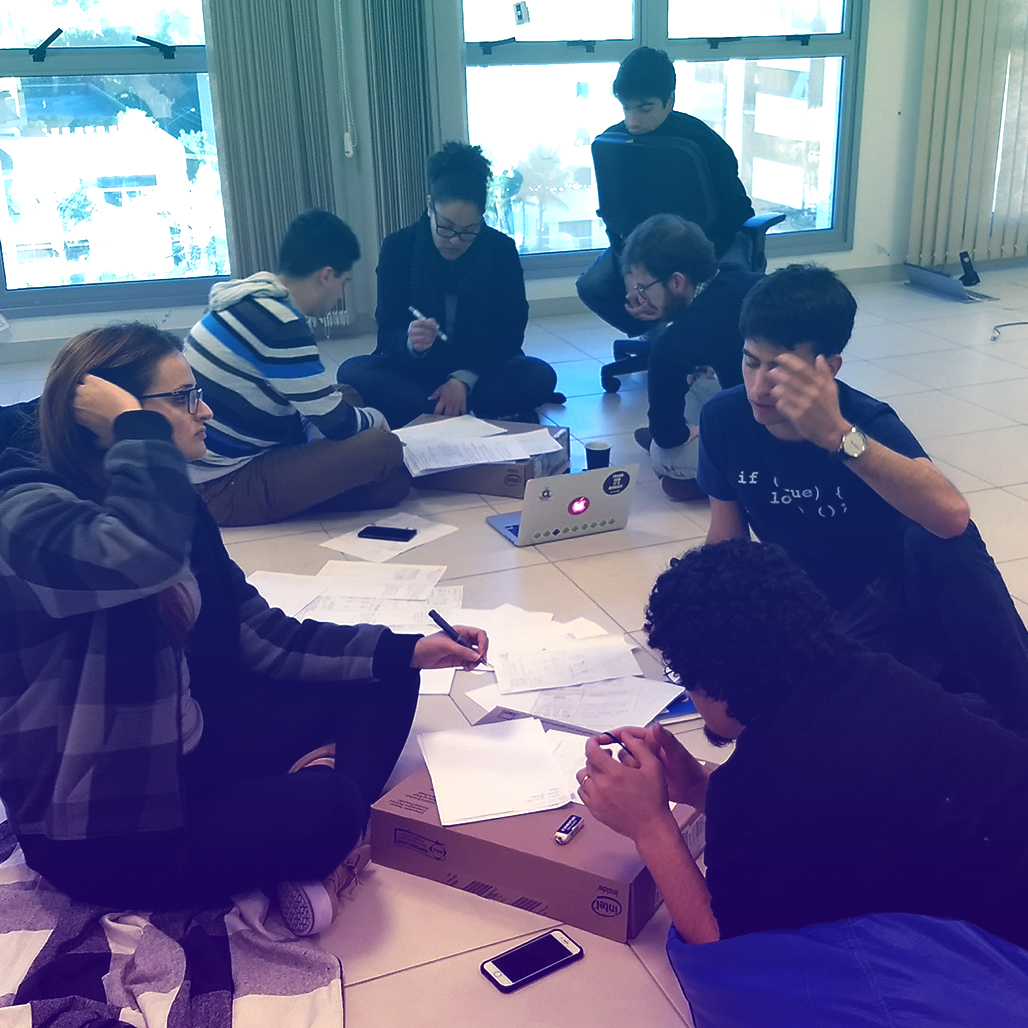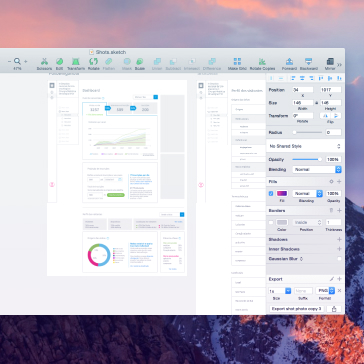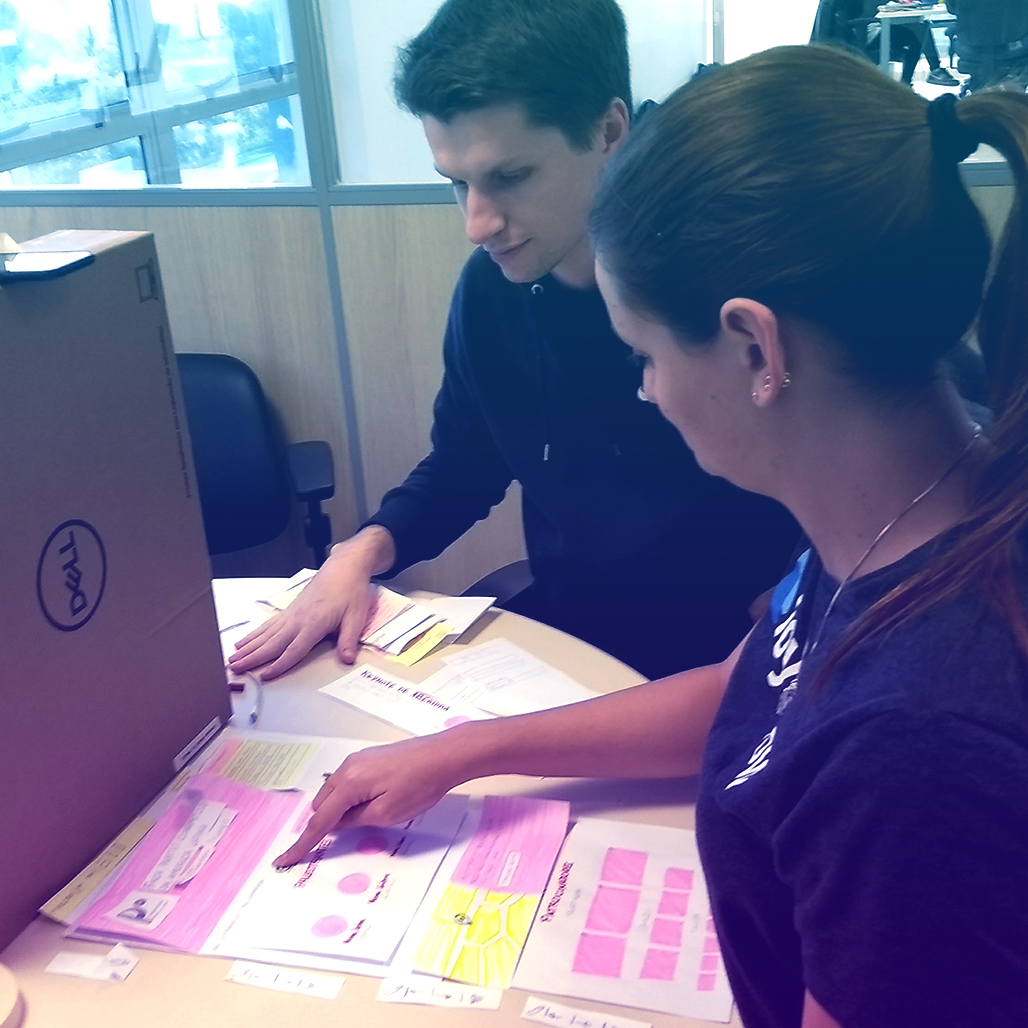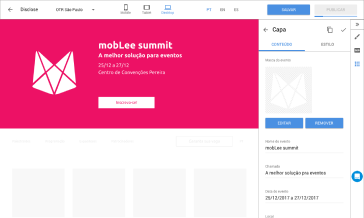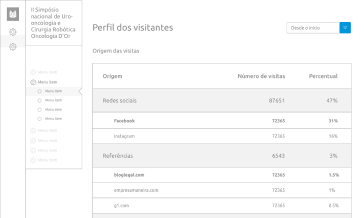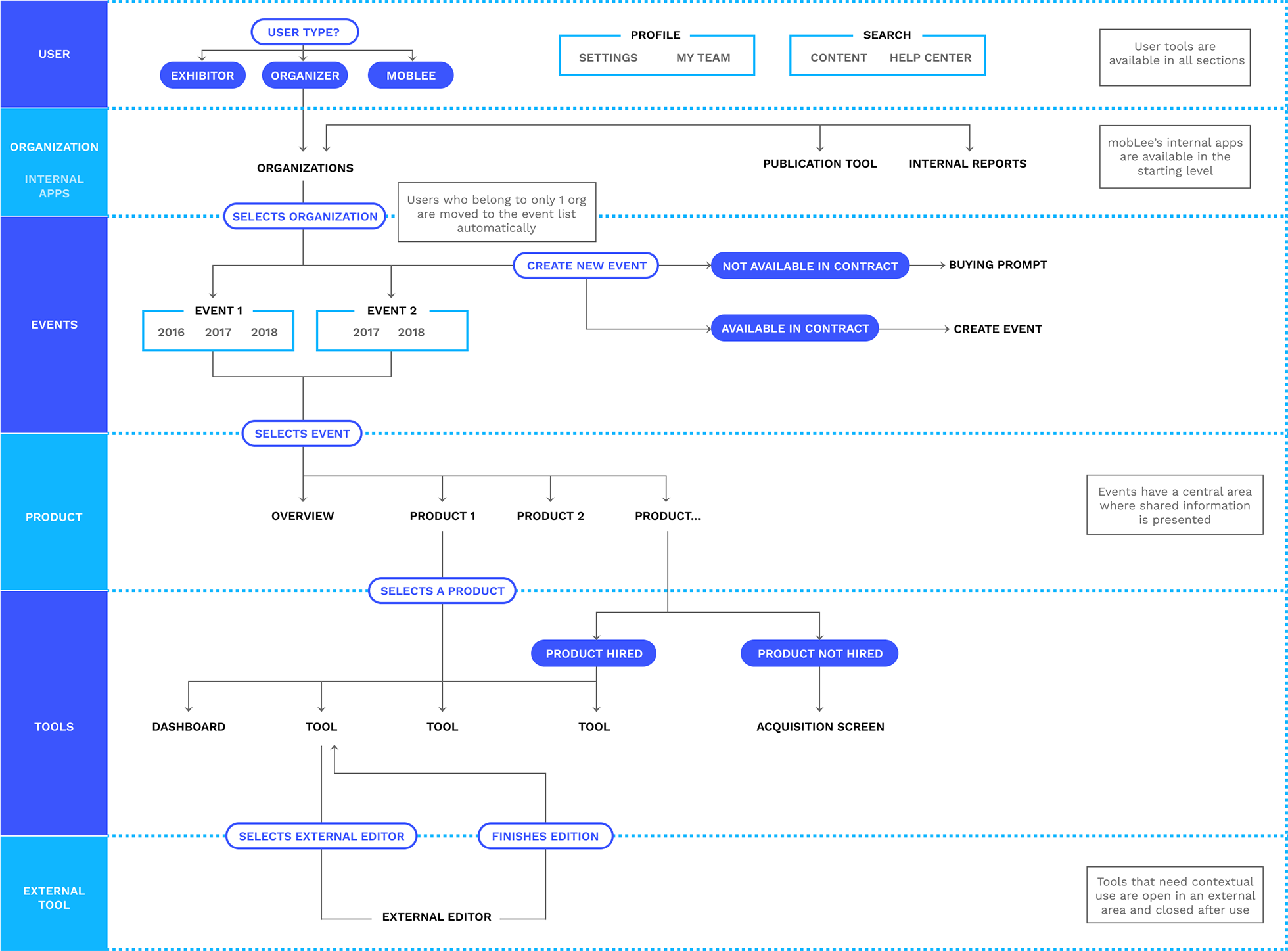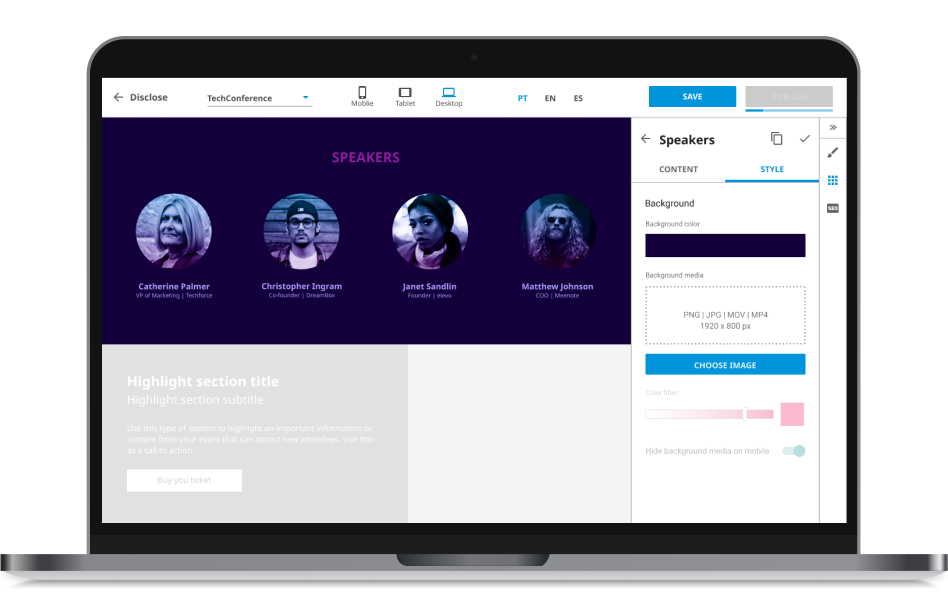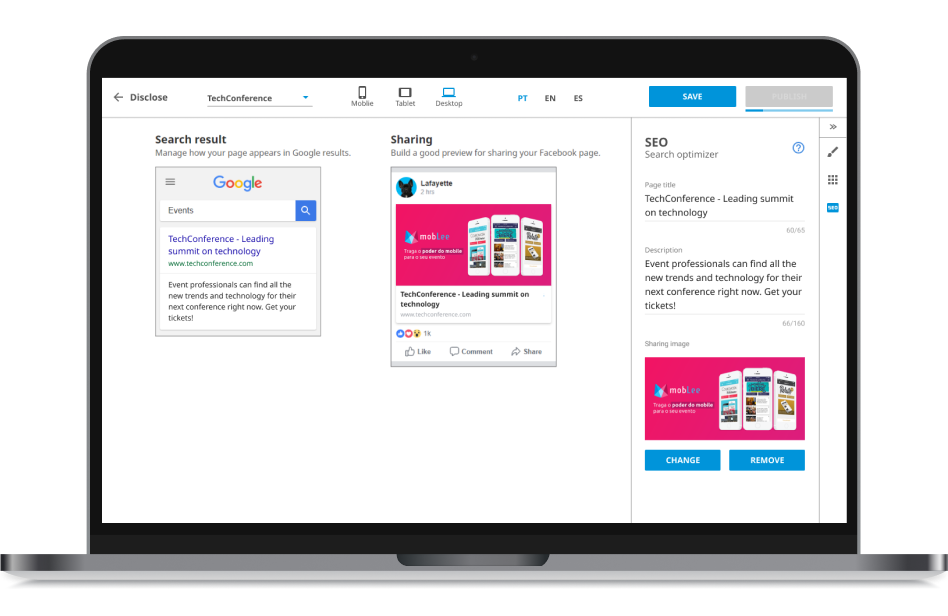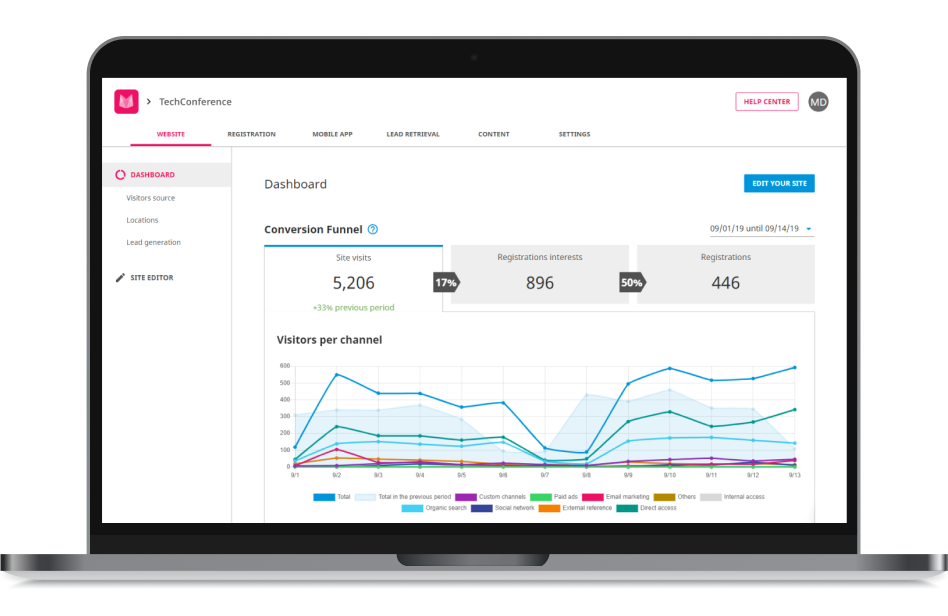The solution
The first step in the product use was to create the event landing page and publish it. With the page live, organizers could then track all their visits, analyze what are the most common visitors’ source and their conversion to ticket sales. By keeping up with these numbers every week and defining goals, they could make tweaks to the page and their campaigns to improve conversion while releasing new event content.
Website builder
The page would be built from a pre-defined template with the most common content sections for the type of event created and with clear call-to-action buttons. For orientation and a quicker setup, basic event information such as the event name, date, and venue were already filled in appropriate areas. The organizer would be able to customize text, colors, images, and media, add new sections and rearrange them.
Responsive page
Even though a big portion of the event websites’ access was from mobile devices, the mobile version of these sites was often overlooked. Our layout was made to be responsive and while building the page, the user could preview how the page would look on a desktop, tablet, or even a smartphone. To optimize the page loading time, there were also options for hiding some types of media on the mobile version.
SEO structure
The page structure was compliant with Search Engine Optimization best practices and our Customer Success team was trained to provide orientation on how to improve the use of keywords throughout the page. Small teams had little experience in preparing their website for Google’s search ranking and this was important to help them improve their organic reach.
Conversion funnel
The product tracked every visit to the website and every click in a registration button and, with integration or manual input, it could also track the final registration numbers, calculating the conversion rate between these 3 steps. Based on these metrics, organizers could plan efforts to improve their results. They would be able to highlight content to motivate visitors to buy tickets or make promotions to capture those giving up in the registration phase, for example.
Acquisition channels
Using referrers and UTM parameters in the URL, the product would keep track of metrics for individual acquisition channels: email, social network, ads, external referrals, organic search, direct access. Each channel was broken down into campaigns or referrer, making it possible for organizers to measure the results of each campaign and their return over investment.
